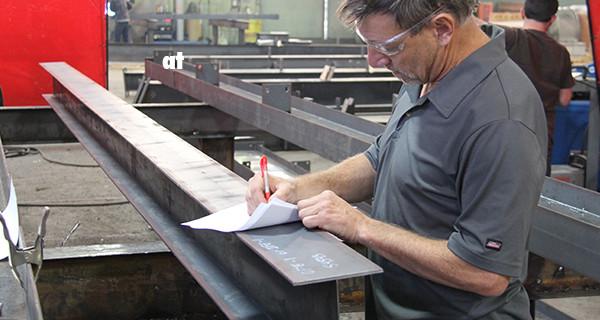Are You a “Barn-Again” Farmer?

You’ve heard of the ‘born-again Christian’, right? For those people that believe, it’s a term that Protestants use to describe the phenomenon of gaining their faith later in life, or someone achieving their spirituality in a religion different than what they grew up believing.
But I’m asking you if you’re a “barn-again’ farmer? No, I’m not trying to put a southern accent on the above phrase. I’m asking if you’re a farmer that needs a new barn and is currently looking for a new one.
I recently took at trip through the Midwest to meet up with some friends. Put yourself in the passenger seat of my truck for a moment. As we rick rack through Nebraska, Iowa, and Illinois, take special note of the landscape. We see a lot of corn and wheat as we pass through little farming communities. As you already know, these farming communities are the lifeblood of our country. In fact, over 2 million farms dot America’s rural landscape, and families operate about 97% of those farms, as stated by the American Farm Bureau. Are you a part of the 2 million farmers trying to make a living and cultivate a your agribusiness?
We also notice a lot of wooden barns in pretty bad shape on some of these farms. Actually, they look like they’re falling apart. Does your old wooden barn have the same appearance? Then it’s time to upgrade to a pre-engineered steel building.
 You love your old barn, but it’s just not serving its function anymore. I understand your barn is a great source of pride. In order to cultivate your farming business, you’ll need to make sure your new barn is performing at its maximum potential. After all, your barn is as much a part of the technology of a farm as your John Deere tractor. I’d even go as far as saying that it’s the single most important piece of farm equipment on your property.
You love your old barn, but it’s just not serving its function anymore. I understand your barn is a great source of pride. In order to cultivate your farming business, you’ll need to make sure your new barn is performing at its maximum potential. After all, your barn is as much a part of the technology of a farm as your John Deere tractor. I’d even go as far as saying that it’s the single most important piece of farm equipment on your property.
How do you use your barn? Do you use it as an animal shelter? How about crop storage and feeding, or vehicle storage?
Most farm animals can survive some exposure to cold weather. When the temperatures start to drop to below freezing, your animals might not be able to deal with the cold. If you live in frigid parts of the country that gets a lot of snow or ice, you may need to look at heating your steel barn. One of the advantages to a pre-engineered steel building is its energy efficiency. Plus, you can easily insulate steel buildings as well. You’ll want to find insulation with a high R-value and eliminates condensation. You don’t want to lose an animal to any cold-related health problems. You’ll also want to consider steel because it’s a safer habitat for the animals. Cows, horses and sheep won’t be tempted to chew on the steel framing, and the animals can’t contribute to the destruction of the barn. You won’t need to constantly replace poles, animal pens or posts due to the wear and tear of animals, rot, fungi and insects.
As you do your research into replacement barns, you’ll want to make sure you maximize your spatial needs. With a steel building clear span rigid frame, you can take advantage of all the space in the building instead of just some of the space. Sometimes with spans less than 40 feet, a pole barn might not need an interior support column. Anything bigger than 40 feet, and a pole is necessary.
 If you’re shopping for more space to hold your giant tractors or other farm equipment, you’ll want to make sure you can make use of all the space, or enough space so your tractor can fit into your building. You don’t want to have to navigate around several poles, blocking your ability to store your machinery.
If you’re shopping for more space to hold your giant tractors or other farm equipment, you’ll want to make sure you can make use of all the space, or enough space so your tractor can fit into your building. You don’t want to have to navigate around several poles, blocking your ability to store your machinery.
Maybe you don’t mind piloting around poles or steering around obstructions. Maybe you don’t feel like ceiling space is a big deal. But it can be. Consider this: A wood building, even if devoid of internal poles, still will have to have a truss and cord system. That translates to more materials, and more cost. That’s why clear span steel buildings are usually less expensive based on price per square foot. There’s less steel to begin with! Plus, the walls are engineered to support the barn’s total weight, and transfer its loads to the foundation. It’s an extremely efficient model, not just for function, but for price as well.
There’s a reason a majority, if not all airplane hangars and most commercial factories are made from steel. They provide all the space you’ll ever need, with no interior interrupts at all.
 There’s a good chance if you’re looking for a replacement barn, you’re inheriting a big piece of land, a farm, or it’s just time to upgrade your property. I know some farmers spend their entire lives working in the fields. I get it; it’s a way of life. But if you ever feel like selling your property or relocating, you want your new barn to actually be an improvement. Because a pre-engineered steel building has a foundation and is engineered to withstand the area’s building codes and loads, they are considered permanent structures by banks, appraisers and lenders. Those entities figure a properly engineered structure with a foundation can keep or gain value. The same isn’t always true of a wooden pole barn.
There’s a good chance if you’re looking for a replacement barn, you’re inheriting a big piece of land, a farm, or it’s just time to upgrade your property. I know some farmers spend their entire lives working in the fields. I get it; it’s a way of life. But if you ever feel like selling your property or relocating, you want your new barn to actually be an improvement. Because a pre-engineered steel building has a foundation and is engineered to withstand the area’s building codes and loads, they are considered permanent structures by banks, appraisers and lenders. Those entities figure a properly engineered structure with a foundation can keep or gain value. The same isn’t always true of a wooden pole barn.
While a pole barn might look right at home on a farm, often it doesn’t have a foundation. The poles are just wedged into the ground, and are not secured to a concrete foundation. Now those same lenders might not consider a wooden barn a permanent structure, and might even cause the value of your land to decrease over time.
More space, less maintenance, better for your animals, and the chance to have your land appreciate over time. Can a pole barn do that for you? This time, when you search for a new barn for your land…again…make it a pre-engineered steel building.
« Want to Build Your Own “Shed-quarters?”
What Kind of Steel Building Are You Looking For? »
Popular Posts

If you’ve been on the Armstrong Steel website, the Armstrong Network, or recently spoken with one of our building consultants, you’ve probably seen or heard about the Direct Buy Process. It’s the easiest way to get a steel building factory direct from the manufacturer. You can qualify for this 9 step procedure by having your financing… …

What’s the hardest part about being a contractor? I know it’s a tough question, but can you, ‘nail down,’ the answer? From earning new business to erecting the structures themselves, it’s a tough job. But above all else, you do what you do because you love it, and you enjoy seeing your customer happy. Since… …

